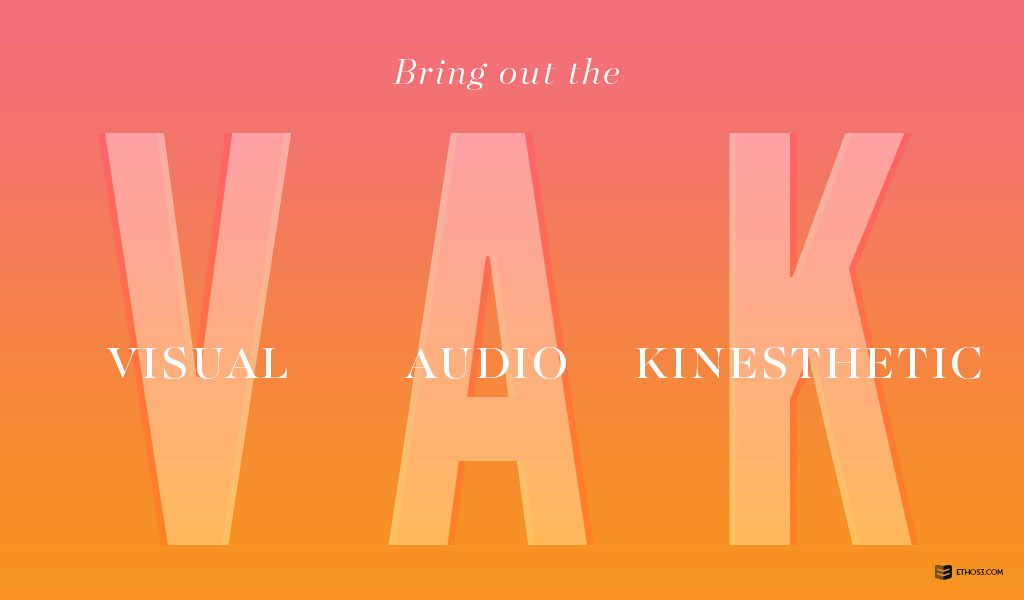According to a Stanford research study, people remember about 5-10% of statistics presented to them, but when those statistics are paired with a good story, that retention rate rises to 65-70%.
If you want your audience to remember the content that you’ve worked so hard to prepare, you definitely want to include a solid story in your presentation arsenal. But don’t think you have to be some sort of narrative genius to make it happen. Presentation storytelling is actually a lot easier than you might think, provided you have the right tips and techniques in your back pocket.

Bring Out the VAK
VAK is a technique used by psychologists to bring a person to a desired state or experience. It stands for visual, audio and kinesthetic, and it’s all about stimulating the senses to keep your audience engaged. When you tell a story, no matter what it is, make sure to supplement it with descriptions of what you saw, what you heard, and what you did. Doing so will help your audience feel as though they’re part of the story. For instance, if you’re sharing a narrative of a time when you were fearful, discuss how fast your heart was beating, whether it made your stomach churn, or if you physically ran away from a situation.
Solve a Problem
From an introduction and conclusion to a solid narrative structure, every good story has a few key elements to make it stick. Among the most critical of those elements, though, is a conflict and resolution component. Without sharing a problem that needs to be solved, it’s nearly impossible to tell a story. If you’re working with a lot of data but are struggling to come up with a compelling narrative to tell with it, look for the specific problem the data showcases and share, with feeling, how you plan to solve it.
Give Love to Your Illustrations
Every story is better with illustrations behind it. Not only are they fun to look at, but they help to paint a clearer picture of what’s being said. This is especially helpful for sharing more complex or abstract ideas. Illustrations can be any type of media you use to better illustrate what you’re saying, Infographics to illustrate data, images to illustrate characters and feeling, and graphics to illustrate ideas are all no-fail options that will make your story all the more compelling.
Get Personal
One of the few things we all have in common is vulnerability. Therefore, a willingness to tap into your vulnerability when telling a story will work wonders to help your audience feel more connected to you. Of course, you don’t need to tell an audience of strangers your deepest and darkest secrets to get vulnerable. Simply sharing that you found something scary, intimidating, or frustrating is a great way to scrub off a lack of authenticity. This will clearly demonstrate to your audience that you’re willing to be honest with them.
Show Don’t Tell
This is a common technique used by writers to help others immerse themselves in a story. Rather than tell your audience how something felt, show them instead. For example, let’s say you’re telling a story about back pain you’ve had. Instead of simply telling your audience how much it hurts or how uncomfortable it was, show them. Describe the activities it limited you from doing, like hugging your children or bringing home groceries. This will make it a lot easier for your audience to become immersed in your story and empathize with your experience.
End With a Takeaway
If you’re telling a great story, it can be easy for your audience to get lost in the details of the narrative and lose sight of why you’re telling it to begin with. When you’ve worked your butt off to engage them with a killer story, the last thing you want is for them to miss the point. To make sure your audience is aware of the message you’re trying to send with your story, always conclude the narrative with a brief summary of your takeaway message.
If you really want to make your next presentation the best one yet, then check out this presentation training we designed to make sure you do just that.